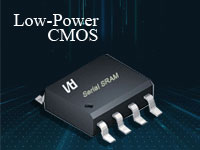IoT Startup Wants Lower-Cost AI
A startup that designed a lighting system for smart homes called for cheaper SoCs and DRAMs to bring machine learning to the Internet of Things. Noon Home is not using neural networks yet, but it wants to and it needs lower-cost chips to do it.
To serve consumer markets, “we look to single-digit component costs … [and] a lot of AI apps require a lot of memory bandwidth,” said Saket Vora, a former engineering manager on the first Apple Watch and now head of hardware engineering at Noon Home.
The 55-person startup uses traditional analytics in its cloud service today, while its data science team explores the possibilities for AI. Ideally, its future lighting controllers could track movements of multiple people throughout a home using programmable inference engines in an SoC costing $5 or less. Today, such chips cost $12 to $15, said Vora.
DRAM costs and availability present equally big barriers. An estimated 512-Mbyte memory for an SoC running AI apps may cost $10 to $12 just for DRAM. That’s twice the price of a processor to run embedded Linux, and “the DRAM supply is tight and pricing is volatile,” he said.
The problem is that the high-volume smartphone and server markets drive memory architectures, prices, and supplies. Meanwhile, trailing-edge components favored in IoT design such as “LPDDR2 are going away and getting into last-time buys,” he said.
The semiconductor industry needs to listen to calls from system architects and even end users if it is going to succeed in IoT, said Maciej Kranz, an author of a popular book on IoT and a vice president of strategic innovation at Cisco.
“Traditionally, chipmakers work with system vendors to get their requirements, but in IoT, this is not a successful strategy,” he added. “You have to talk to end customers, too … you need to standardize on a few use cases and connect the dots [among user requirements] to find repeatable patterns.”
Meanwhile, Noon Home is fielding its first-generation products — a $199 lighting controller and a $99 extension switch. The controllers link via Wi-Fi to a home router and the startup’s cloud service. It uses Bluetooth to pair with the extension switches.
The controller sports an OLED touch screen, and it packs a Cortex-M7 SoC and a separate time-of-flight sensor — both from STMicroelectronics. The switches use a Microchip PIC MCU.
The startup aims to work with what it believes will be the major smart home platforms — Amazon’s Alexa/Echo, Google’s Nest, and Samsung’s SmartThings [[CQ]]. “Each has its strengths and weaknesses, but I don’t expect any of them to go away,” said Erik Charlton, chief executive of Noon Home and a former head of sales for Nest.
Asked about his work on the Apple Watch, Vora said that its system-in-package (SiP) marked a significant advance, but such designs have their changes.
“SiP has been used in RF modules for some time, but moving the main processor and RAM into the package was the real breakthrough … [but SiP] isn’t a silver bullet,” he said. “SiP has a lot of problems around supply chain, rework, and repairability. You have to look at the whole picture because there are a lot of gotchas.”
CONTACT US
USA
Vilsion Technology Inc.
36S 18th AVE Suite A,Brington,Colorado 80601,
United States
E-mail:sales@vilsion.com
Europe
Memeler Strasse 30 Haan,D 42781Germany
E-mail:sales@vilsion.com
Middle Eastern
Zarchin 10St.Raanana,43662 Israel
Zarchin 10St.Raanana,43662 Israel
E-mail:peter@vilsion.com
African
65 Oude Kaap, Estates Cnr, Elm & Poplar Streets
Dowerglen,1609 South Africa
E-mail:amy@vilsion.com
Asian
583 Orchard Road, #19-01 Forum,Singapore,
238884 Singapore
238884 Singapore
E-mail:steven@vilsion.com
